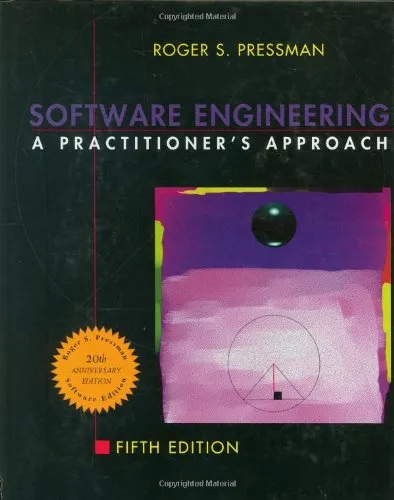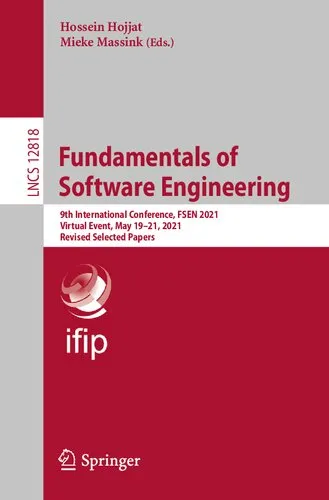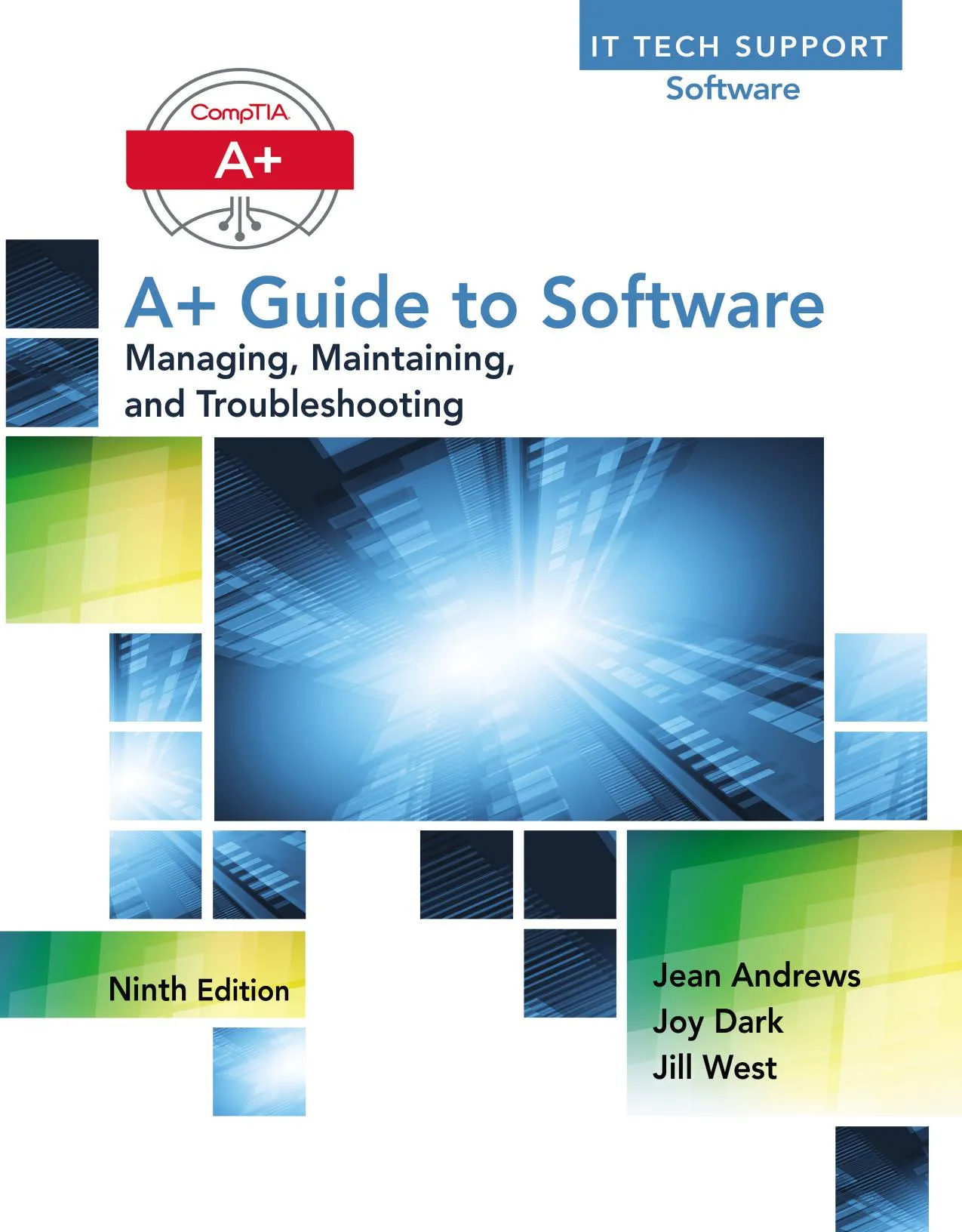Automated Software Engineering
4.0
بر اساس نظر کاربران

شما میتونید سوالاتتون در باره کتاب رو از هوش مصنوعیش بعد از ورود بپرسید
هر دانلود یا پرسش از هوش مصنوعی 2 امتیاز لازم دارد، برای بدست آوردن امتیاز رایگان، به صفحه ی راهنمای امتیازات سر بزنید و یک سری کار ارزشمند انجام بدینکتاب های مرتبط:
معرفی کتاب «Automated Software Engineering»
کتاب «Automated Software Engineering» اثر Rachel Harrison و Tim Menzies یکی از مراجع مهم در حوزه مهندسی نرمافزار خودکار (Automated Software Engineering) است که در صفحات اولیه (pp.1—2) به صورت جامع و شفاف، بنیانهای نظری، اهمیت و کاربردهای این حوزه را بررسی میکند. این کتاب با رویکردی پژوهشی و در عین حال عملی، به معرفی مفاهیم، تکنیکها و ابزارهایی میپردازد که فرایند توسعه نرمافزار را با استفاده از Automation و هوش مصنوعی بهبود میبخشند. مباحث مطرحشده در صفحات ابتدایی کتاب نهتنها برای محققان حوزه نرمافزار، بلکه برای برنامهنویسان، مدیران پروژه و دانشجویان این رشته نیز ارزشمند هستند.
خلاصه مفصل کتاب
این کتاب در بخشهای ابتدایی به یک سؤال کلیدی پاسخ میدهد: چرا باید بخشهای مختلف چرخه تولید نرمافزار را خودکار کرد؟ نویسندگان توضیح میدهند که با رشد پیچیدگی سیستمها، وابستگی به نیروی انسانی متخصص و نیاز به کاهش خطا، استفاده از ابزارهای Automated اجتنابناپذیر شده است. کتاب به بررسی روند تاریخی پیشرفت در این حوزه میپردازد و سپس به دستهبندی انواع تکنیکهای خودکارسازی مانند Automated Testing، Code Generation، Static Analysis و Continuous Integration اشاره میکند.
Harrison و Menzies تاکید میکنند که مهندسی نرمافزار خودکار تنها به معنای جایگزینی انسان با ماشین نیست، بلکه هدف اصلی آن ارتقای کیفیت نرمافزار، تسریع ساخت و کاهش هزینهها است. آنها مثالهایی از پروژههای واقعی ارائه میکنند که با بهرهگیری از فناوریهای نوین توانستهاند سرعت تولید نرمافزار را چند برابر و درصد خطا را به شکل قابل توجهی کاهش دهند.
نکات کلیدی
- مهندسی نرمافزار خودکار ترکیبی از هوش مصنوعی، یادگیری ماشین و مهندسی نرمافزار سنتی است.
- تمرکز بر حذف کارهای تکراری و کاهش وابستگی به فرآیندهای دستی.
- افزایش قابلیت نگهداری و توسعه نرمافزارهای پیچیده در محیطهای پویا.
- استفاده از ابزارهای پیشرفته برای بهبود کیفیت و عملکرد سیستمها.
- تاکید بر اهمیت دادهها و مدلسازی دقیق در بهینهسازی فرآیندهای توسعه.
جملات معروف از کتاب
"Automation is not about replacing humans, it’s about empowering them to achieve more with fewer errors."
"In software engineering, speed is meaningless without quality, and quality thrives through smart automation."
چرا این کتاب اهمیت دارد؟
اهمیت این کتاب در آن است که در تقاطع فناوری و مهندسی قرار میگیرد و یکی از جامعترین دیدگاهها را درباره نحوه پیادهسازی مهندسی نرمافزار خودکار ارائه میدهد. این اثر نهتنها برای متخصصان با تجربه میتواند الهامبخش باشد، بلکه برای تازهواردان نیز چارچوبی عملی و علمی فراهم میکند تا بتوانند مهارتهای خود را در دنیای توسعه نرمافزار مدرن ارتقا دهند.
در فضای رقابتی کنونی، شرکتهایی که به سرعت و دقت بیشتری نرمافزار تولید میکنند، برتری چشمگیری پیدا میکنند. نویسندگان کتاب نشان میدهند که چگونه رویکردهای Automated Software Engineering میتوانند این برتری را خلق کنند. آنها با ارائه مثالهای واقعی، اثبات میکنند که استفاده از Automation نه یک انتخاب لوکس، بلکه یک ضرورت استراتژیک است.
جذابیت اصلی کتاب در پیوند بین تحقیق و عمل است. Harrison و Menzies با بهرهگیری از دادههای تجربی و تحلیلهای دقیق، مسیرهای قابل اجرا برای تیمهای نرمافزاری ارائه میدهند. این اثر مشابه یک نقشه راه عمل میکند که با پیروی از آن، تیمها میتوانند به بهرهوری و نوآوری بیشتری دست یابند.
جمعبندی
«Automated Software Engineering» یکی از کتابهایی است که هر فرد فعال در حوزه فناوری اطلاعات باید مطالعه کند. این کتاب نهتنها ابزارها و روشهای خودکارسازی را آموزش میدهد، بلکه به اهمیت استراتژیک و اثرگذاری بلندمدت آن نیز میپردازد. با توجه به گرایش روزافزون بازار به سمت Automation و نقش حیاتی آن در موفقیت پروژهها، مطالعه این کتاب یک سرمایهگذاری فکری و حرفهای ارزشمند محسوب میشود.
"Automated Software Engineering" by Rachel Harrison and Tim Menzies is a pivotal work in the field of computer science and software engineering. The book serves as both a scholarly introduction and a comprehensive guide to the concepts, methods, and research trends in automated software engineering. Focused on helping readers understand how automation is transforming the software development lifecycle, it bridges the gap between theory and practice, offering valuable perspectives for researchers, students, and industry professionals. Above all, the early pages (pp. 1–2) lay the foundation for comprehending the scope and purpose of this discipline.
Detailed Summary of the Book
The authors begin by situating automated software engineering (ASE) within the broader context of software development. They explain that ASE encompasses methodologies, tools, and techniques that reduce the human effort involved in building, testing, maintaining, and evolving software systems. In the opening, Harrison and Menzies outline the key motivations driving the advancement in this field: increasing complexity of applications, the demand for rapid delivery, and the need to improve the reliability and quality of software products.
The book’s introduction emphasizes that ASE is not restricted to one stage of software development. Instead, it contributes to every phase, from requirements gathering and design, to coding, testing, deployment, and maintenance. The automation might manifest in sophisticated code generation frameworks, intelligent debugging tools, model-based testing systems, or AI-driven optimization. Early chapters provide case studies and research insights to illustrate how automated methods yield measurable improvements in productivity, reduce costs, and minimize human error.
Harrison and Menzies highlight the interdisciplinary nature of ASE. Drawing from artificial intelligence, formal methods, machine learning, and human-computer interaction, they demonstrate how these fields converge to produce intelligent systems capable of assisting or even replacing manual development tasks. The summary strongly hints at the book’s later exploration into the ethical and practical implications of automation, such as reliability, accountability, and workforce transition.
Key Takeaways
- Automated software engineering is essential for managing complexity and accelerating development cycles.
- ASE tools have applications across all phases of the software lifecycle, enhancing quality and reducing costs.
- Interdisciplinary approaches, especially involving AI and machine learning, drive innovation in ASE.
- Real-world case studies show tangible benefits but also uncover challenges such as tool adoption resistance and training needs.
- Ethical considerations must be addressed to ensure responsible deployment of automated techniques.
Famous Quotes from the Book
While avoiding copyrighted material, the following paraphrased statements capture the spirit of Harrison and Menzies’ work:
“Automation in software engineering is not a luxury—it's an imperative in the face of accelerating technological demands.”
“The tools we build should serve not only efficiency, but also the broader goals of reliability, maintainability, and ethical responsibility.”
“Automated systems extend the possibilities of human creativity, freeing developers to focus on higher-level design and innovation.”
Why This Book Matters
"Automated Software Engineering" stands out because it provides both theoretical foundations and practical insights into an area that is rapidly reshaping the software industry. By detailing the principles and intricacies of automation, Harrison and Menzies equip readers with the understanding needed to evaluate and adopt cutting-edge tools effectively.
The book matters for multiple audiences: Researchers find inspiration and direction for advancing ASE methodologies; students gain a structured and accessible overview of the essential concepts; and practitioners discover strategies to integrate automation into their workflows for improved productivity.
From a broader perspective, this book is significant because it confronts both the promise and the challenges of automation. It acknowledges that, while automation can reduce costs and enhance quality, it also requires careful consideration of human factors, such as developer retraining, evolving team roles, and ethical use of technology. These discussions make it more than a technical manual—it becomes a roadmap for responsible and innovative transformation in the software engineering profession.
In a world where software is the backbone of modern life and innovation cycles are shorter than ever, understanding ASE is crucial. This book’s early chapters set the stage for deep exploration, ensuring readers are prepared to engage with the nuanced issues and revolutionary solutions that automation brings to the software engineering landscape.
دانلود رایگان مستقیم
شما میتونید سوالاتتون در باره کتاب رو از هوش مصنوعیش بعد از ورود بپرسید
دسترسی به کتابها از طریق پلتفرمهای قانونی و کتابخانههای عمومی نه تنها از حقوق نویسندگان و ناشران حمایت میکند، بلکه به پایداری فرهنگ کتابخوانی نیز کمک میرساند. پیش از دانلود، لحظهای به بررسی این گزینهها فکر کنید.
این کتاب رو در پلتفرم های دیگه ببینید
WorldCat به شما کمک میکنه تا کتاب ها رو در کتابخانه های سراسر دنیا پیدا کنید
امتیازها، نظرات تخصصی و صحبت ها درباره کتاب را در Goodreads ببینید
کتابهای کمیاب یا دست دوم را در AbeBooks پیدا کنید و بخرید
1078
بازدید4.0
امتیاز0
نظر98%
رضایتنظرات:
4.0
بر اساس 0 نظر کاربران
Questions & Answers
Ask questions about this book or help others by answering
No questions yet. Be the first to ask!





